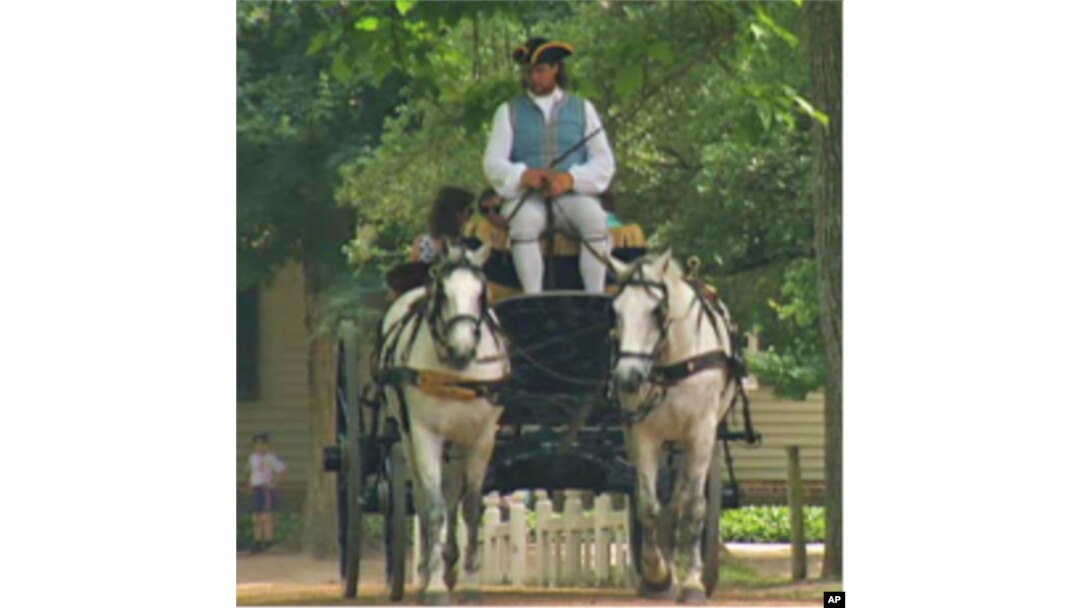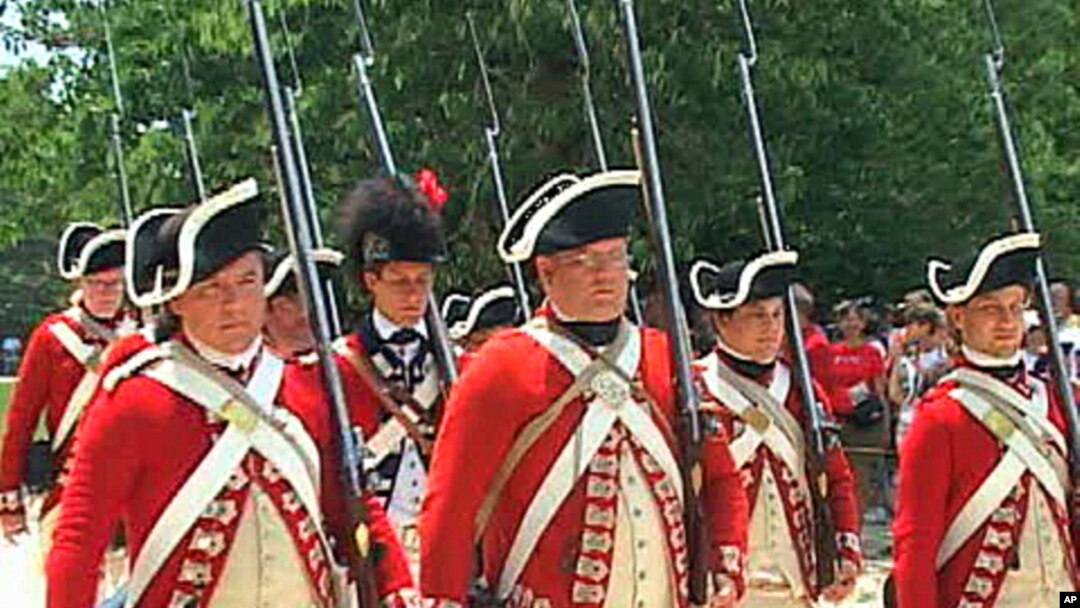Colonial Williamsburg, in the eastern U.S. state of Virginia, is an open-air living museum, populated by historical re-enactors, also called interpreters.
They dress in 18th century clothing and demonstrate how Americans lived at the time of the Revolutionary war -- when the American colonies broke away from Great Britain.
More than 1,500 costumed interpreters and re-enactors roam the streets of colonial Williamsburg every day.
They give tours, answer questions and discuss topics as varied as wig-making or 18th-century manners. Bill Rose is a character interpreter who portrays a man who lived during the Revolutionary War.
"If you have a good interpreter, you don't have to change the facts of history," says Bill Rose, a character interpreter who portrays a man who lived during the Revolutionary War. "They can make those facts palatable and enjoyable to a modern audience and can help draw those connections and that's the best thing in the world."
The actors dress, talk and work as if they lived in colonial times. Some portray multiple characters while others re-enact one specific role. For most, re-enactment is their full-time job and career.

Horses and carriage in Colonial Williamsburg
"It's their job but it's also their passion to come and dress up in 18th century clothes and interpret history for our guests," says Jim Sutphin, Williamsburg's director of Historic Programs.
Before they start portraying an 18th century character, the actors attend history classes, costume fittings and rehearsals.
Half of Williamsburg's 18th-century population were slaves of African origin, since slavery had not yet been abolished.
"What I do puts a human face on what was going on," says Hope Smith, who interprets a slave. "You're able to see the Revolutionary War through the eyes of the specific character that I am doing. You're able to connect what happened to an individual through their eyes. So it's not just these big historical events."

Williamsburg re-enactors dress in 18th century clothing and demonstrate how Americans lived at the time of the Revolutionary War.
Along with the character interpreters, Williamsburg is home to several shops where re-enactors demonstrate 18th century skills like blacksmithing, carpentry or sewing. Matthew Ocketzo studies blacksmithing in college and interns in Williamsburg.
"People have a lot of preconceived notions about blacksmiths and it's interesting to see people come in with what they know and see how surprised they are when they realize what's going on."
The blacksmith shop provides tools for the other shops and maintains the historic area and buildings. The re-enactors' main goal is to preserve this trade for future generations of Americans. Mathew says he is happy to help carry on a tradition that goes back thousands of years.
These interpreters give voice to half of Williamsburg's 18th-century population: slaves of African origin.
"Today people go to jobs that they hate in offices and they loathe being there," says Ocketzo, "but every day in a blacksmith's shop there's really engaging, fascinating, satisfying work to do."
Tourists can see the re-enactors and interpreters at Colonial Williamsburg year round, rain or shine. Besides being novel and interesting, the actors give color and meaning to a place steeped in history and the origins of American democracy.


